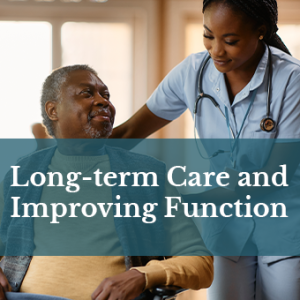
Associations between Nursing Home Characteristics and Nighttime Emergency Department Transfer in Japan
Presenter(s):
Ai Suzuki; Kazuaki Uda; Taeko Watanabe; Nanako Tamiya, University of Tsukuba, Japan
Abstract
Background: The number of nursing home residents transferred to the emergency department(ED) is increasing. However, research on the factors associated with ED transfer in the Japanese setting is lacking. In addition, given the limited staff availability during night shifts, implementing strategies to prevent ED transfers during this period is imperative. Such measures may alleviate the burden on staff. Therefore, this study examined the associations between nursing home characteristics and nighttime ED transfers in Japanese nursing homes.
Methods: This retrospective cohort study analyzed administrative secondary data linked to medical and long-term claims data from a suburban prefecture in Japan from April 1, 2018, to March 31, 2019. Participants who were residing in nursing homes as of July 1, 2018, were included. Each participant was followed up from July 1, 2018, to the first occurrence of emergency department transfer, death, move to another facility, or the end of follow-up (9 months), whichever occurred first. The primary outcome was the nighttime ED transfer rate, which was calculated as the number of ED transfers divided by the total person-years. The exposure of interest was nursing home characteristics, including care type(traditional care/unit care/mixed care), presence of a full-time physician, nighttime staff arrangements(standard/ staffing levels exceeding the standard/presence of a nurse or trained care worker), and staffing levels(number of doctors, nurses, care workers, care managers, and social workers). A negative binomial regression model adjusted for resident and facility characteristics other than those mentioned above was used to estimate the relationship between nursing home characteristics and nighttime ED transfer rates.
Results: In total, 11661 residents and 238 nursing homes met the inclusion criteria. Overall, 202 nighttime ED transfers were recorded. The crude rate of nighttime ED transfers per 1000 residents was 26.3. Results from the negative binomial regression analysis showed that a lower rate of nighttime ED transfers was associated with unit care (incidence rate ratio (IRR) 0.54, 95% confidence interval (CI) 0.35-0.84, ref; Traditional care) and higher number of care managers (IRR 0.67, 95% CI 0.45-0.99).
Conclusions: Our findings suggest that nursing home characteristics, such as the implementation of unit care and a higher number of care managers may reduce the frequency of nighttime ED transfers. Further research is warranted to clarify the causal relationship between nighttime ED transfers and these nursing home characteristics to establish an optimal facility structure.
Bio(s):
Ai Suzuki is a doctoral student at the University of Tsukuba, Japan, specializing in public health, long-term care, and health services research. Her work focuses on the organization and delivery of long-term care services for Japan’s aging population. Using quantitative methodologies and administrative claims data, she conducted studies exploring the structure, processes, outcomes, and challenges of Japan’s long-term care system.
With a strong interest in evidence-based policy development, she aims to improve the quality and accessibility of care for older adults in nursing homes. Her recent research was focused on variations in antipsychotic prescriptions between nursing homes.
At this conference, she will present findings from her ongoing study titled, “Associations between Nursing Home Characteristics and Nighttime Emergency Department Transfers in Japan” and discuss the implications for public health and long-term care policy.
